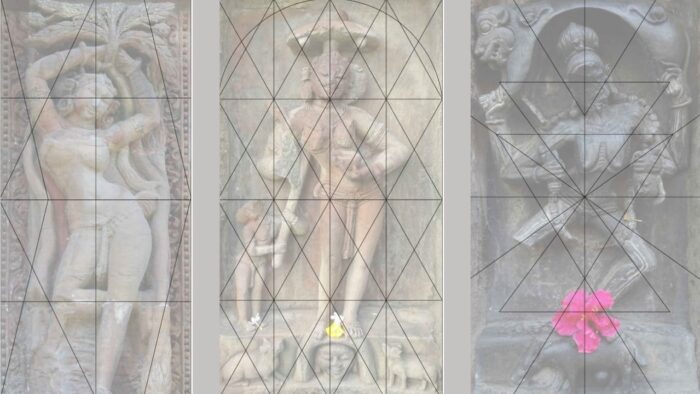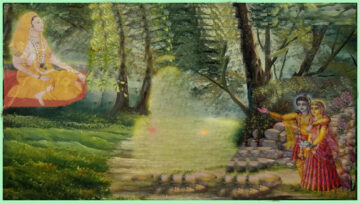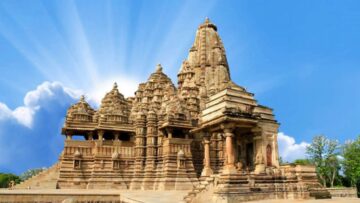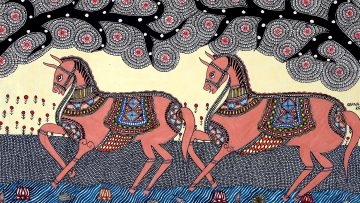Composition principles are the immanent logic which regulates each artistic style and the fundamental law which determines its visible formulation. They are a necessity for every traditional art, in which cosmic concepts and a transcendent metaphysical vision are systematically defined. They are abstract but fundamental objective of the spiritual image of the universe, which is essential for any traditional art which is to be modelled.
These diagrams are not quite identical to those we generally observe, as they relate to a unique type of sculptural pattern, but they do have enough affinity to show that they depend ultimately on the same basic principles. One such text which talks about such metaphysical designs on which the designing and ornamentations were of sculptures were done was Shilpa Prakash.
Shilpa Prakash is a Sanskrit text which dates back to probably the 10th or 11th century CE and it majorly deals with the design and construction of a Shakta temple. It is based entirely on tantric doctrines which also give Dhyana for the descriptive purposes of all architectural parts of the temple, the diagrams and the exact rules for their composition for the images to be grafted on the walls.
It is by nature that such composition principles can be studied after an effective research based on the material evidences and as well as the historic cultural bases of an art to provide a clear overview of its development from the start to the highest development. It is therefore not surprising that the ‘composition logic’ mentioned by various scholars earlier did not receive the same attention it deserved in studies on Hindu art. The area of archaeology and art history has to still do justice to the inexhaustible wealth of art produced during the thousands of years of India’s history. But one knows that these disciplines are mainly fact-finding and they are not directly concerned with the science and theory behind that art.
A further argument is that it would be difficult to take account of the perfect logic and harmony of design that prevail throughout the Indian sculpture in the absence of any guiding principle of composition. It would be even more difficult to explain why some of the composition principles were not valid in the vast majority of India in various even distant areas of the country and at various times the same subjects were modelled on very similar patterns. The examination of the compositional principles in Hindu sculpture becomes more important today, because for many reasons it still seems to be confusing forms for many due to the excessive wealth of detailing in its nature.
India is closely related to the symbolism of spatial directions in the Guna theory, which considers that the universe consists of three fundamental tendencies i.e. Sattva, Rajas and Tamas. The upward trend towards Consciousness, Light and Truth is Sattva, the expanding tendency of Power is Rajas and Tamas is the descending with inertia, darkness and ignorance weighed down tendency. The diagram of a cross is represented in which the upward Sattvic trend is the vertical bar, while the lower part of the vertical bar represents the opposite, the descending Tamasic trend. The cross bar represents the growing Rajasic tendency on both sides. The centre is a distinguishing point from which all Gunas originate. In accordance with its inherent characteristics, space directions and Gunas also correspond to the five elements accordingly.
According to above attributes, various Yantras have been proposed in Shilpa Prakash, in which the Shilpi was entitled to carve the images in the appropriate scale and proportions. Some of the following are as follows:
Yogini Yantra
According to Shilpa Prakash the Yogini Yantra is very essential Yantra in the temple construction. According to the text three points on the ground should be made equally. One of the two triangles should be made resting on the upper Bindu. The other is the Trikona of sattva and likewise the Trikona of Rajoguna. The Trikona from Tamas should be joined from the end of the line.
Below there should be a triangle in the opposite direction which depicts Tamoguna. Then a line is to be drawn through the centre of the Sattva guna. Similarly, a line should go down in the Tamas Trikona below. The Rajo Bindu (central point) forming the triangles should be linked to these lines. This is considered to be the best yantra which consists of five above and below triangles.
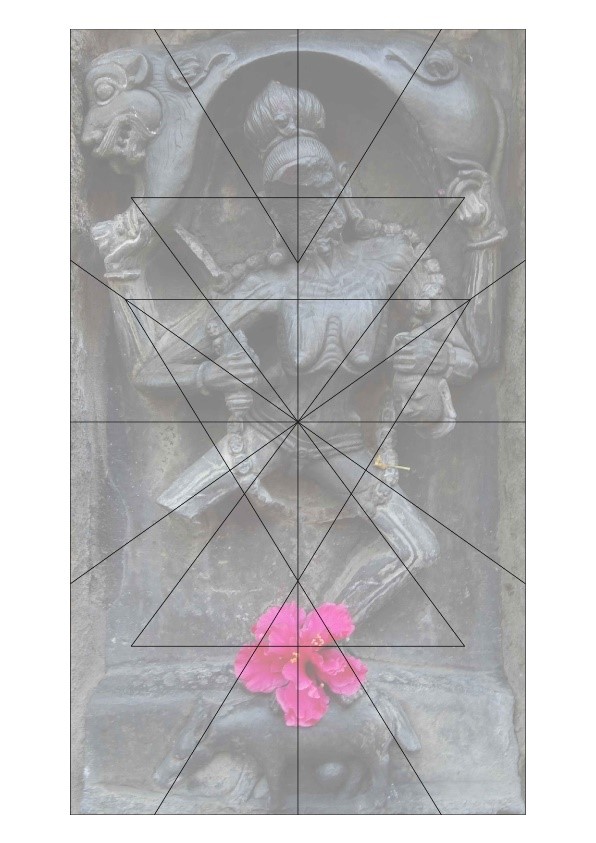
Toran Lakshmi Yantra
In the middle of the Torana, in the centre of the doora Yantra should be drawn. On the site of the lintel two kinds of Toranas are advised to be made, namely Shubha Lakshmi and Gaja Lakshmi.
A square should be built on the beautiful stone panel. The frame for this should be generally the sixteenth piece of a stone. The panel should be split in the length and width by five lines, with two diagonal lines on the centre point should be drawn from the angles. Four corners should be cut from the second line-divisions and four or two arms are to be made from the middle part.
The head should be in the middle of the second horizontal division on the vertical middle line. The centre should lie on the neck and chest down to the navel. In the second division, both right and left arms should be along and forearms should be formed in the upper part. There should be lotus flowers in the region of these Bindus, with two elephants above them. Their trunks should extend up to the first uppermost line across the head of the Lakshmi.
The asana should be made from the bottom medium point. The first horizontal knees should be on the sides (from below). The legs should be at the bottom line, a beautiful drapery should be made at the third Bindu within the central lower triangle. There must be one lotus seat of either 16, 12 or 10 petals in the lowest part.
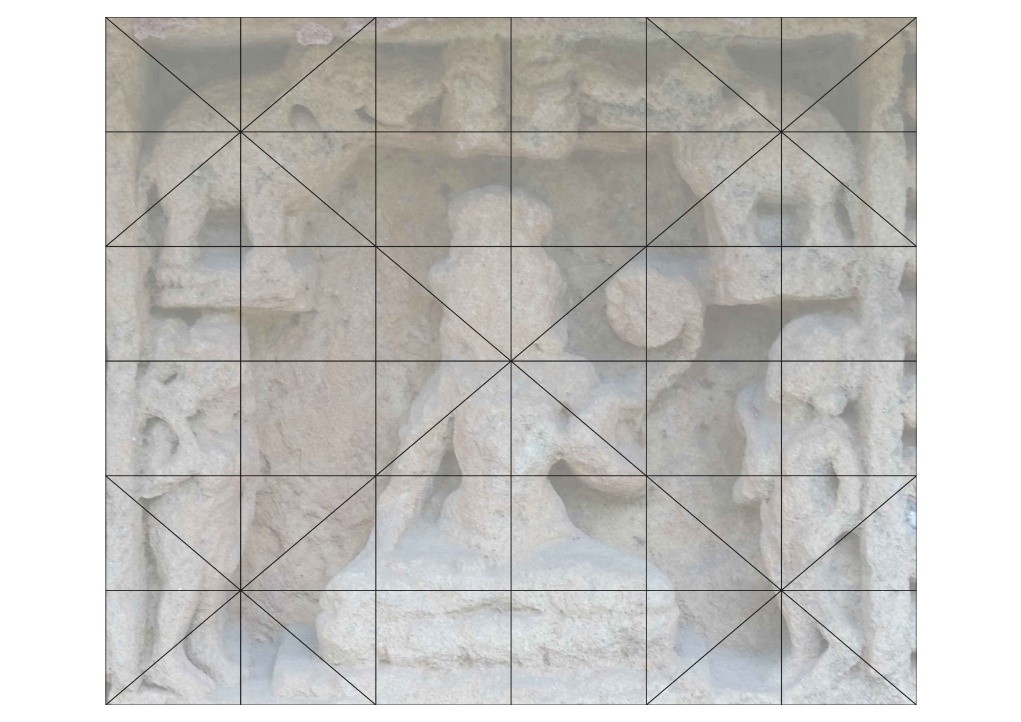
Shikshadana Yantra
The texts say that the excellent Shikhsadana panel should be drawn on the yantra on a square or a rectangular field. The top decorations should be made after the image panel has been made according to rules. There should be five lines on a rectangle (vice versa) and four or five divisions horizontally depending on whether it is a rectangle or a square.
Triangles should start from the fourth line above on the sides. The centre should be the third horizontal one, which denotes the two arms of the triangle. Again, one should draw two diagonal lines that move towards the last angle on the second horizontal from the top of the sixth vertical line (boundary line). The other lateral field should be equally divided and the second should be divided similarly.
The profile of the teacher should be shown up to the chest in the central triangular field and one hand on the oblique line should be placed in that part. In the other part, there should be the three points connected on the opposite side forming an angle or a triangle. At the centre, the navel should be located. There should be two figures under the teacher’s seat that spread to the second horizontal in the sacrosanct central field of disciples. The attendants should be located on that rectangular panel and in the central triangular field.
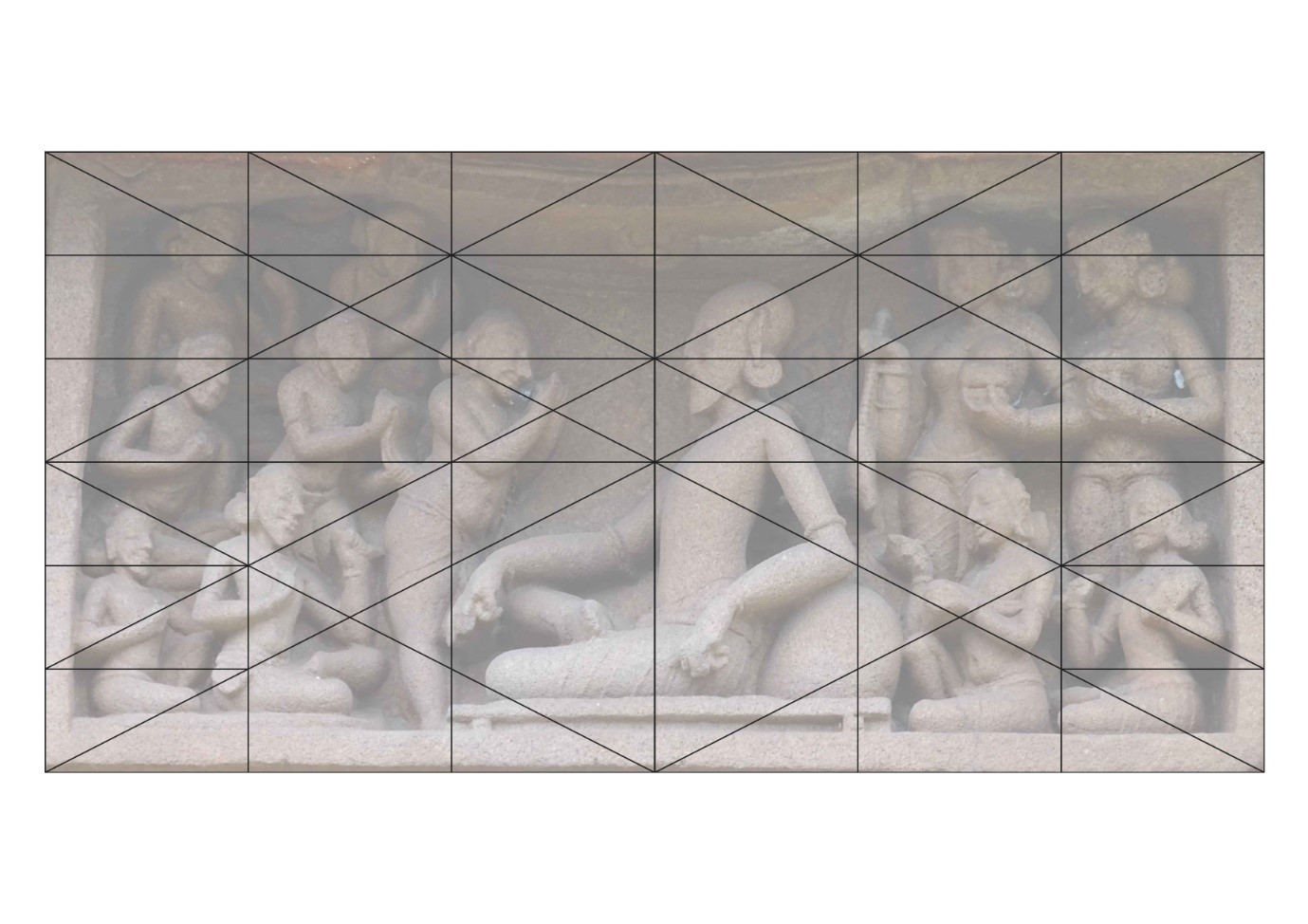
Shakti Yantra
For Shakti Yantra it is advised to take a niche-shape stone, the Mahayantra should be made for them according to rules for several Shakti images. Images of Katyayani, Chamunda, Ugratara etc. should be made in this way.
One should make three lines, depending on the space of a square or rectangle in both length and breadth. Regular divisions are to be made with these vertical and horizontal lines. Then diagonals are to be divided through the four-sided field by which the points at the crossing are connected to the central point due to which the first vertical diagonal affects the first horizontal.
Lines from right and left corners, from the upper and lower boundaries should intersect successively from either side, in the same manner. Separate divisions are to be created by starting from each line. Finally, one should draw two diagonals starting from the lower ChedaBindu to the first one (upper Bindu) in each field. Then one should draw a half-circle to the border. There should be four triangles in the top and bottom part.
In the centre of the highest triangle is made the head of the ornament and the neck of the second Bindu is decked with ornaments. The navel should be on the third Madhya Bindu and should always be positioned in the lower part. Then the image should be created in the third horizontal with lines with many arms. One can produce two, four or ten arms out of the image.
A beautiful pedestal should be created for a standing image (Pitha), and including its Vahana too. The image or iconography should be regional in accordance to the local tradition. The Vahana should depend on the centre and the Devi’s crown as well as the ornaments should be beautiful and pleasant. The draperies and decorations should look eloquent.
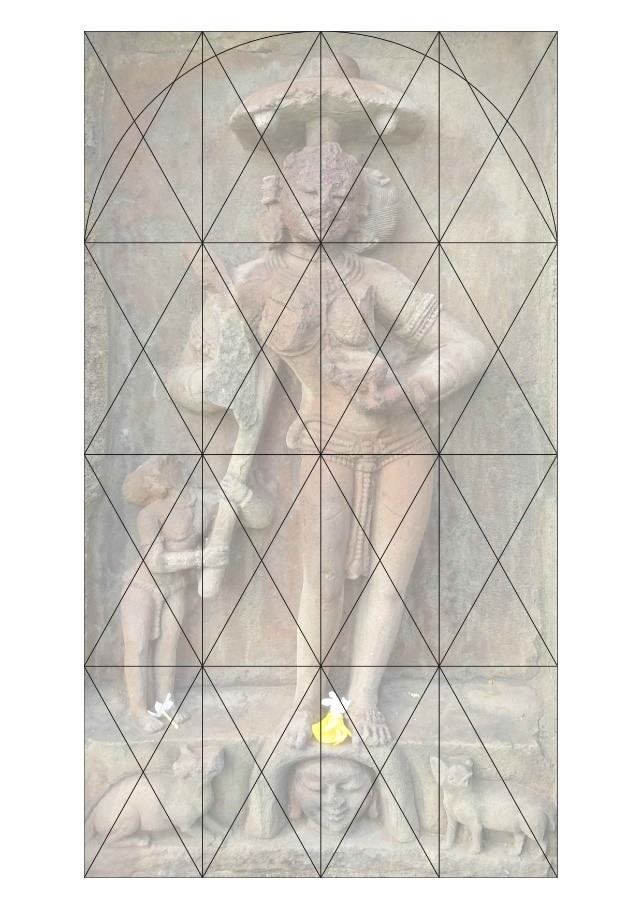
Alas Kanya Yantra
The movement of the Alasa Kanya won’t come out properly without a rectangular floor panel as advised by the text. A vertical middle line should be drawn in an upright rectangle according to rules. A central line should be drawn horizontally, and from the left point one should join two obliques going in opposite directions.
They should be connected as a triangle of isosceles from above and below both. Again, on the right, the same line below that is connected to the upper corner from the horizontal point (middle line) to the lower corner, based on the central horizontal point should be connected. On the right side it should have an extended triangular field. This is the Alasa Kanya Yantra.
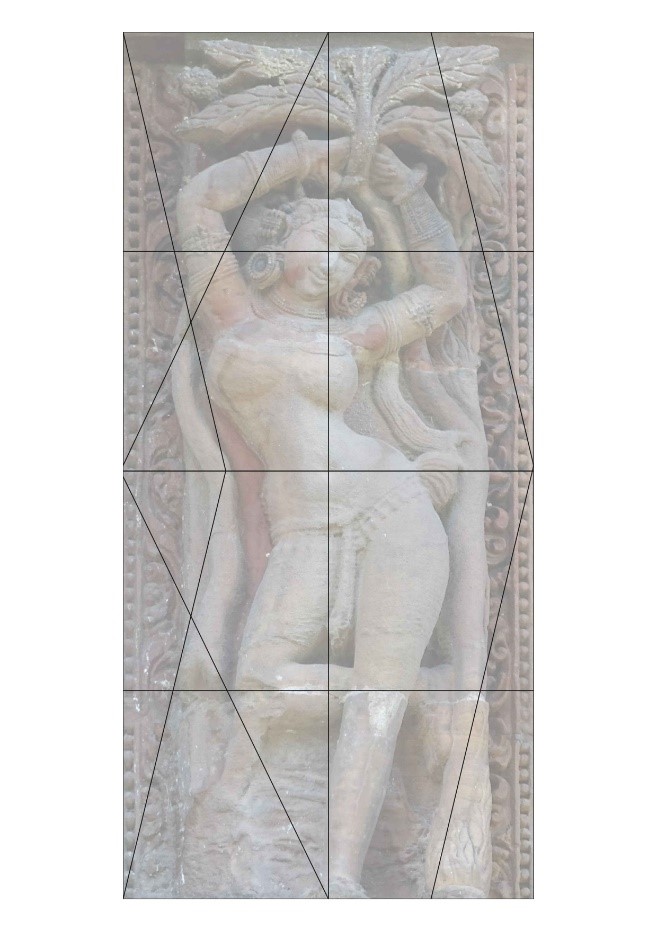
Natambara Yantra
For Natambara (Nataraja) Yantra, it has been advised that there should be a circle inside a square field where four divisions with three lines are to be made vertically and horizontally. Starting from the lower Bindu up to the central horizontal line, diagonals should spread across the middle line. Two lines on the two sides should be drawn above this, beginning from the first crossing point. Three squares should be formed sitting on the side lines. Also, vertically on the middle line there should be three divisions. Two diagonals should be placed on both the sides in the upper field. The dance image of Shiva should always be made under this Yantra to obtain great bliss. The composition of the Natambara should be established in the line-divisions of this yantra.
The Trikuta Bindu is the Bindu on the top lines and said to be the best place to set the middle of the brows of Natambara. The face should be inclined from there and the neck-part should be placed on the fourth oblique on the right-hand line. The chest should be on the oblique right, and the navel should be on the Bindu Madhya. From here the legs should go to the right side and to the left as well. On the third crossing to the right, the right knee should be made and on the second line the left one. The first right arm from above should be positioned on the right vertical line. The third right arm should be attached to the line below that. The forearm, in the form of a beautiful line, should be at the middle horizontal which is the half way upward on the vertical left side of the upper left arm.
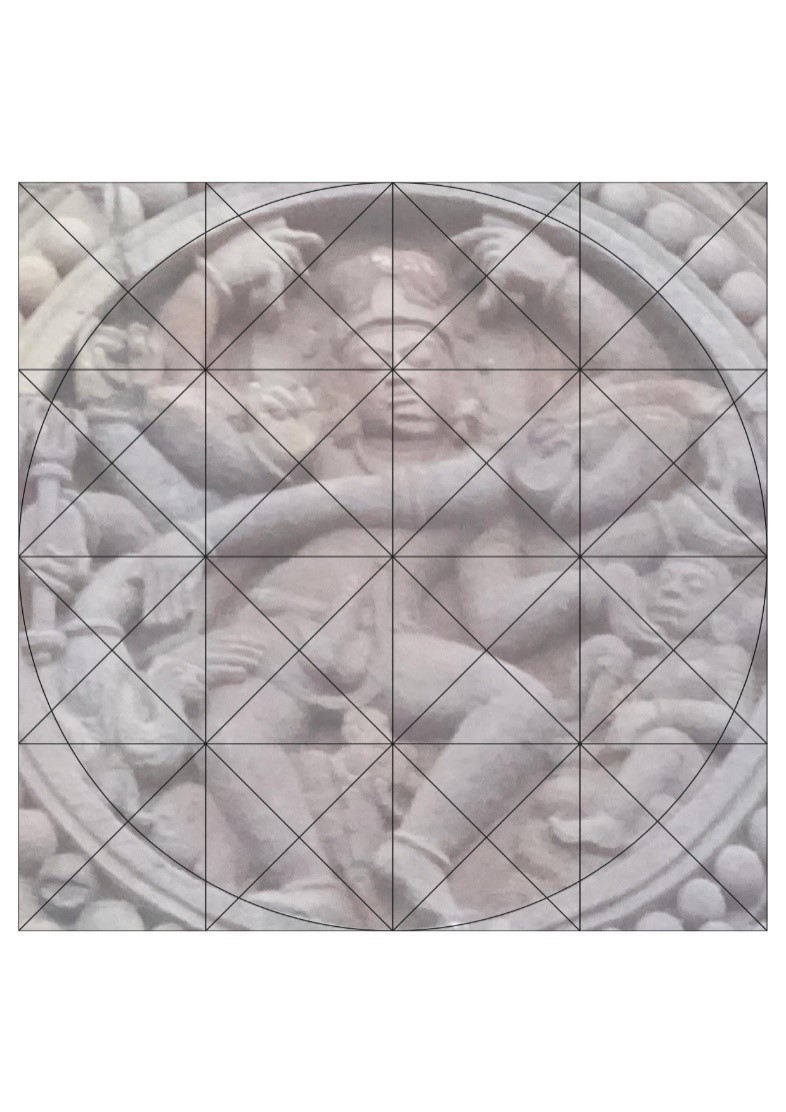
Conclusion
Yantras discussed here are consistently based on a concentrated organisation of space and are presented among a host of others. The number of those described here were enough to give a fair idea of the principles behind their crafting which was the basis of composition of sculptures in Odisha.
The Yantra schemes discussed above have revealed a symbolism of abstractness which corresponds to different aspects of the aesthetics, characterised by their actions and attributes which was included in the lines of their outlay. Also it shows the final striking synthesis which came by a precise interweaving of the illustrative element and their fundamental patterns.
However, future analysis would involve a far greater number of text studies on the significance of different and there is always a possibility to that. All the other available regional textual authorities should be collated in order to analyse the multifaceted relations and subtle differences between representations of the same divinity and to elucidate their doctrinal and theological significance. Only then one could get the composition pattern to constitute an abstract as well as the condensed expression of the inner sense of an image. The primary objective of this paper was to look into some possibilities of interpretation in the hope that the symbolic value of all the elements included in these sacred images would be rediscovered gradually with time in future.
When one explored their inner meaning based on their compositional patterns, based on the analysis of the elements given by traditional iconography, one can be certainly satisfied by discovering that the iconographic data and figure attributes were quite naturally and logically integrated into these patterns. That is why one is convinced that the creation of a given picture is a kind of fundamental yantra which could be an enormous contribution to the true symbolism of its conception and all its elements in terms of Iconography.
In ancient times, the worship of images had a much deeper meaning than today. The revaluation of the fundamental symbolism and rediscovery of the meaning lost in many of these old images is an urgent task in order to better understand the Hindu art. But a knowledgeable leaflet is required to recover the real importance and to restore these images of the dignity of their esoteric symbolism which can only be achieved by those who have the privilege to be born and brought up within the context of such beautiful dignified tradition.
Together with the unfathomable symbolism of their imagery, the very nature of such sculptures evokes an esoteric background that one could not forget. One also can’t think to suppress such speculative ideas, because there is a hope of provoking further research on this line at the appropriate time in future by young researchers. Such research must bravely explore the depths of its real life emotional, religious and spiritual currents behind such creations over the time, because alone the sources of such extra-ordinary artistic inflorescence can be hopefully detected in the deep and vital underlying reality, which is yet to be unexplored.
Image Credit: Picxy.com/sunillodhwal
Conference on Hindu Aesthetics
Disclaimer: The opinions expressed in this article belong to the author. Indic Today is neither responsible nor liable for the accuracy, completeness, suitability, or validity of any information in the article.

